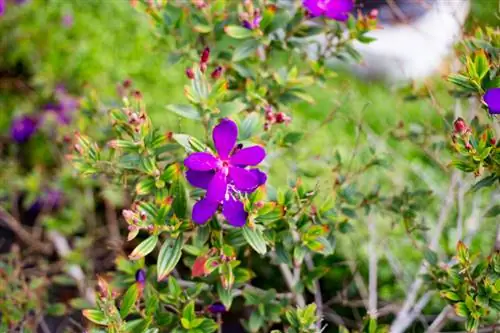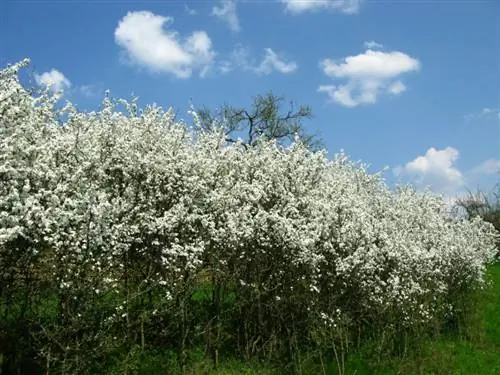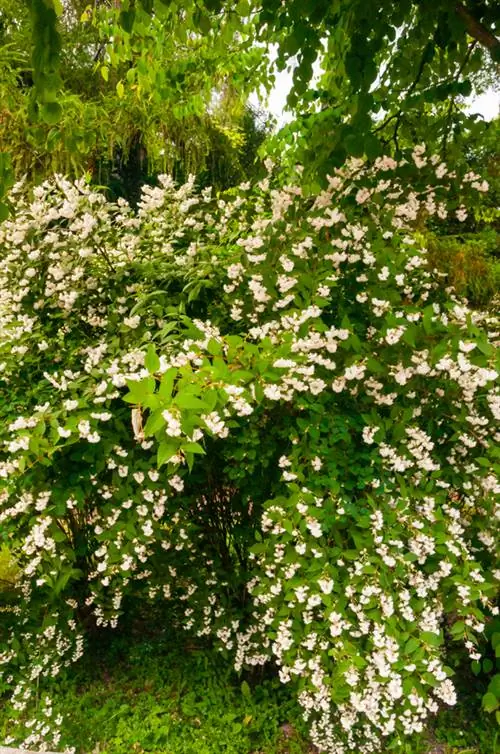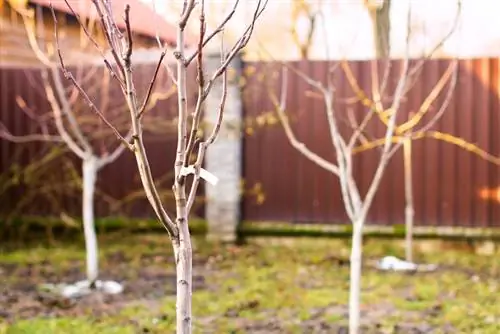- Author admin [email protected].
- Public 2023-12-16 16:46.
- Last modified 2025-01-23 11:20.
The cranesbill - botanically geranium - is a very popular perennial for gardens and containers. However, the numerous species differ significantly in terms of their locations, which is why this article provides you with a practical overview of the specific planting conditions.

What conditions does the cranesbill need to grow?
Depending on the species and variety, the cranesbill prefers sunny, partially shaded or shady locations and loamy-humus soils, which can be dry or moist depending on the species. For optimal flowering, planting in spring and a species-appropriate planting distance are important.
Which location does the cranesbill prefer?
Depending on the species and variety, the cranesbill can be planted in sunny, partially shaded and even shady locations. The table below offers you a selection.
Which soil is optimal for the cranesbill?
Almost all cranesbills prefer a loamy, humus-rich soil, although some prefer it dry and others prefer it moist.
When is the right time to plant/sow?
The cranesbill is sown or planted in spring.
What planting distance should be maintained?
The planting distance also differs significantly depending on the species and variety. The table below gives you a good overview of how many plants of a particular type you should plan for per square meter of area.
What is the best way to propagate the cranesbill?
The cranesbill can best be propagated by sowing or dividing. For some species, vegetative propagation via cuttings also makes sense.
When does the cranesbill bloom?
Most cranesbill species bloom in June/July, although there are also early-blooming and late-blooming species. Pruning after flowering can encourage some cranesbills to bloom a second time.
Good neighbors / Bad neighbors
Many cranesbill species harmonize very well with roses and/or peonies.
Location requirements and planting distances at a glance
| Storksbill species | Latin name | Location | Floor | Plants per square meter |
|---|---|---|---|---|
| Cambridge cranesbill | Geranium cantabrigiense | sunny to partially shaded | loamy-humus | 16 |
| Gray Cranesbill | Geranium cinereum | full sunny | loamy-humic, slightly alkaline | 25 |
| Clarke's Cranesbill | Geranium clarkei | sunny to partially shaded | loamy-humic, nutrient-rich | 11 |
| Rozanne | Geranium x cultorum | sunny to partially shaded | loamy-humic, nutrient-rich | 4 |
| Himalayan Cranesbill | Geranium himalayense | sunny to partially shaded | loamy-humic, nutrient-rich | 8 |
| Heart-leaved cranesbill | Geranium ibericum | sunny to partially shaded | loamy-humic, nutrient-rich | 8 |
| Rock Cranesbill | Geranium macrorrhizum | sunny, partial shade or shady | loamy-humic, moderately nutrient-rich | 11 |
| Splendid Cranesbill | Geranium magnificum | sunny to partially shaded | loamy-humic, nutrient-rich | 11 |
| Gnarled Mountain Forest Cranesbill | Geranium nodosum | sunny to shady | loamy-humic, moderately nutrient-rich | 11 |
| Oxford cranesbill | Geranium oxonianum | sunny to shady | loamy-humic, moderately nutrient-rich | 5 |
| Brown Cranesbill | Geranium phaeum | sunny to shady | loamy-humic, moist | 6 |
| Armenian cranesbill | Geranium psilostemon | sunny | loamy-humic, nutrient-rich | 3 to 5 |
| Caucasus Cranesbill | Geranium renardii | sunny | moderately fertile, dry, slightly alkaline | 11 |
| Bloody Cranesbill | Geranium sanguineum | sunny | loamy-humic, moderately nutrient-rich | 7 to 16 |
| Siberian Cranesbill | Geranium wlassovianum | sunny to partially shaded | dry, humus | 8 |
Tip
Many hybrids such as “Rozanne”, “Nimbus”, “Orion” or “Salome” offer an exceptionally long flowering period.






